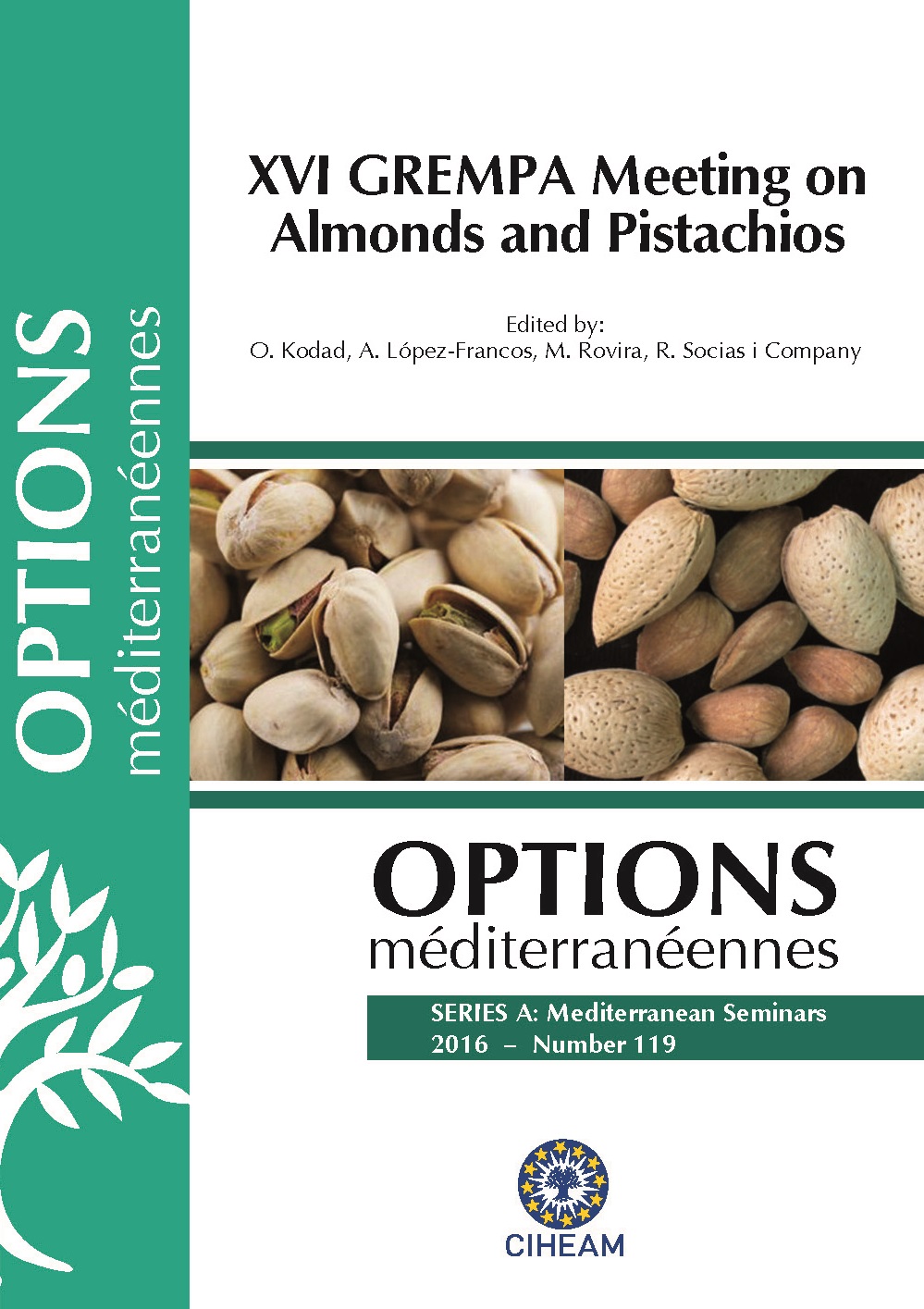| Article précédent | p. 83-86 | Article suivant |
Significance of S-genotype determination in the conservation of genetic resources and breeding of almond
Most almonds are self-incompatible, and they are also cross-incompatible with those having an identical incompatibility (S) genotype. In recent years, several almonds have been S-genotyped using different approaches. This information has been included in different tables of cross-incompatibility groups, which are an update of the previously proposed one. However, no attempt has been made to reconcile the information of all these tables neither to correct possible inconsistencies. In this work we have determined the S-genotype of 15 Spanish almond cultivars previously un-genotyped using consensus primers for the first and second introns of Prunus S-RNases, and also allele-specific primers here designed. We could identify a new S-RNase allele numbered as S51, which was cloned and sequenced. With the information obtained in this work and in previous studies, we have established eight new cross-incompatibility groups. Some of the already proposed groups need to be re-numbered to avoid the gaps left by those no longer existing. The determination of the S-genotype of almond genetic resources to be preserved as part of the agricultural biodiversity will facilitate the use of this material in research and breeding, and also provides useful information about phylogenetic relationships.
La plupart des amandes sont auto-incompatibles, ils sont aussi cross-incompatibles avec celles ayant un génotype (S) d’incompatibilité identiques. Au cours des dernières années, plusieurs amandes ont été Sgénotypés en utilisant différentes approches. Cette information a été incluse dans différents tables des groupes cross-incompatibilité, qui sont une mise à jour de ceux proposés précédemment. Cependant, aucune tentative n’a été faite pour concilier les informations de toutes ces tables ni de corriger les éventuelles incohérences. Dans ce travail, nous avons déterminé le S-génotype de 15 cultivars d’amandier espagnols précédemment non-génotypés en utilisant des amorces consensus pour les premier et seconde introns de S-RNases de Prunus, mais aussi des amorces allèle-spécifiques ont été conçus. Nous avons pu identifier un nouvel allèle S-RNase numéroté comme S51, qui a été cloné et séquencé. Avec les informations obtenues dans ce travail et dans les études précédentes, nous avons établi huit nouveaux groupes cross-incompatibilité. Certains des groupes déjà proposés doivent être re-numéroté pour éviter les lacunes laissés par ceux qui n’existe plus. Le S-génotypage des ressources génétiques d’amande préservée dans le cadre de la biodiversité agricole facilitera l’utilisation de ce matériau dans la recherche et la sélection, et fournira également des informations utiles sur les relations phylogénétiques.
- [ Afficher ]
- [ Télécharger ]
- [ Exporter la citation ]
Vous pouvez télécharger la citation au format :
- [ Imprimer ]
-
Mots-clés
CONSERVATION RESSOURCES GENETIQUES, PRUNUS DULCISCiter cet article
Gómez E.M., Dicenta F., Batlle I., Romero A., Ortega E. Significance of S-genotype determination in the conservation of genetic resources and breeding of almond. In : Kodad O. (ed.), López-Francos A. (ed.), Rovira M. (ed.), Socias i Company R. (ed.). XVI GREMPA Meeting on Almonds and Pistachios. Zaragoza : CIHEAM, 2016. p. 83-86. (Options Méditerranéennes : Série A. Séminaires Méditerranéens; n. 119). 16. Meeting of GREMPA (Groupe de Recherches Méditerranéennes pour l\'Amandier et Pistachier / Mediterranean Research Group for Almond and Pistachio), 2015/05/12-14, Meknes (Morocco) . http://om.ciheam.org/om/pdf/a119/00007369.pdf



